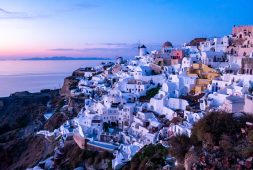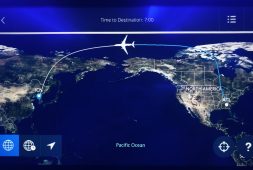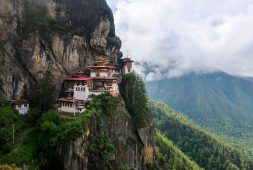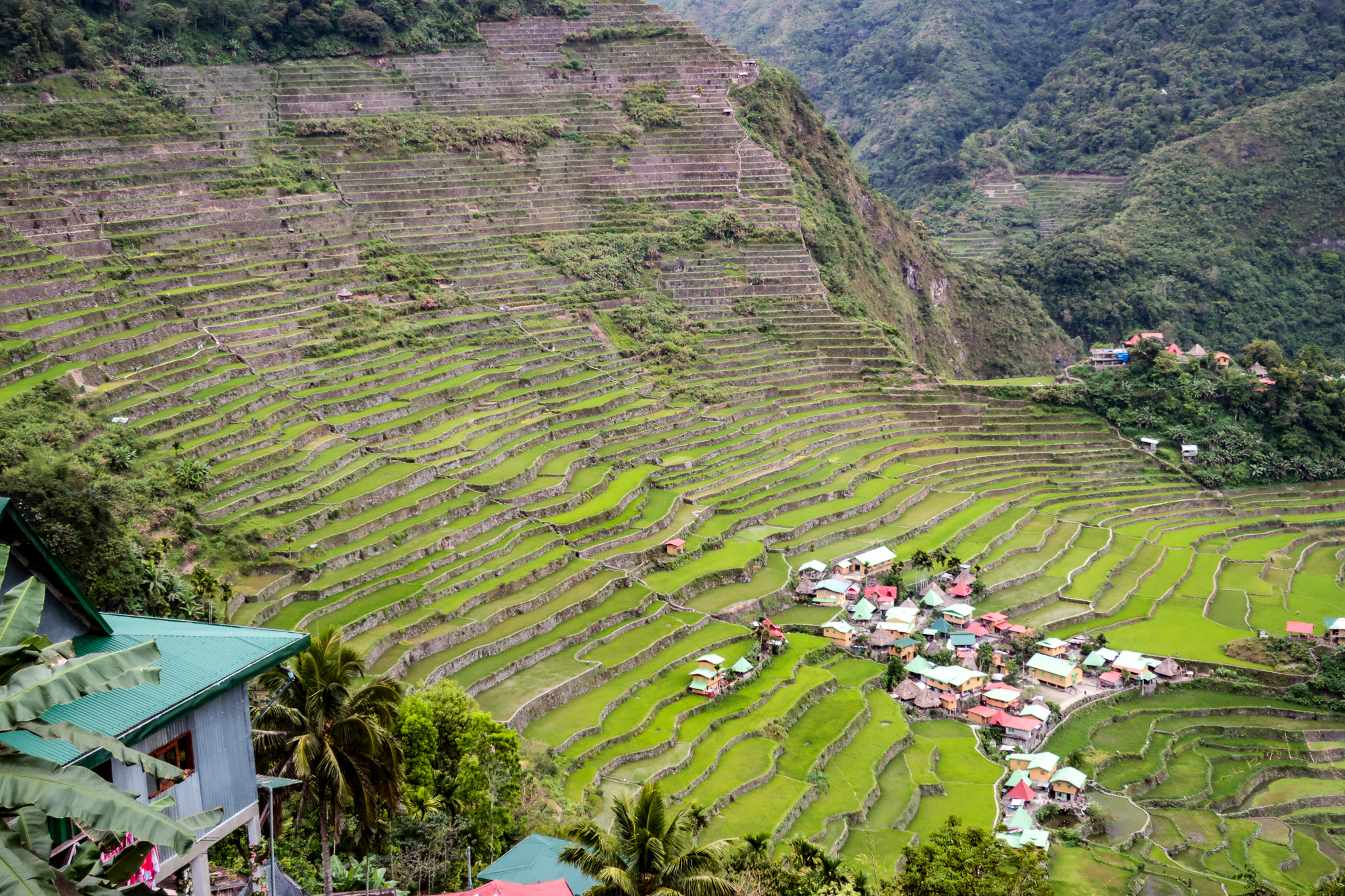
When most people think of visiting the Philippines, they think of world class diving, world class beaches and stunning islands. However many travelers miss out on the breathtaking rice terraces of the Ifugao territory on Luzon island north of Manila. After seeing other rice terraces in other countries, the Ifugao rice terraces are some of the most immaculate in the world. This is almost a hidden gem and was certainly a highlight of my three-week visit to the Philippines!
NINE HOUR BUS RIDE TO IFUGAO
One of the reasons many foreign tourists miss out on this stunning area is because of the difficulty getting there. There are no airports nearby and the only way to travel to this region is by car or by bus. Renting a car is an option however the road is a two lane, mountainous and extremely curvy road with a lot of traffic. I wouldn’t recommend renting a car.
Most buses to the Ifugao region depart in the evening from Manila, drive overnight, and arrive first thing in the morning. The trip is nine hours one way. Most people travel to the village of Banaue which is the “easiest” to get to of all the towns in the region. The bus is a typical coach bus with no toilet however the bus stops several times along the way. Be prepared to pay five pisos to use the rest stop bathroom. The bus does have Wi-Fi which helps. However be sure to wear layers of warm clothing as the bus becomes extremely cold during the trip. I’m never cold but with long pants and a long sleeve shirt over a short sleeve shirt, I was freezing.
DAY TRIP TO BANAUE, HUNGDUAN AND HAPAO
After the bus arrived around 6am, the hotel had arranged someone to pick me up along with a Filipino couple. I joined the couple later that morning on a private tour of the Banaue rice terraces as well as a trip to the terraces of Hungduan and Hapao.
The Banaue rice terraces are just north of the Banaue village. The terraces straddle a river that runs through the valley below. Along the road that passes by the terraces, there are many different viewpoints of the stunning scenery. Stop by each one to see the fields from different angles.
After an hour of viewing the Banaue rice terraces, we drove over a mountain range to another valley where the towns of Hungduan and Hapao were located. We parked along the road and began a hike into the valley through more spectacularly constructed rice fields. We saw the local people in the fields working the land. It was amazing to weave through the fields. It was almost like a maze and you could have fun figuring your way out.
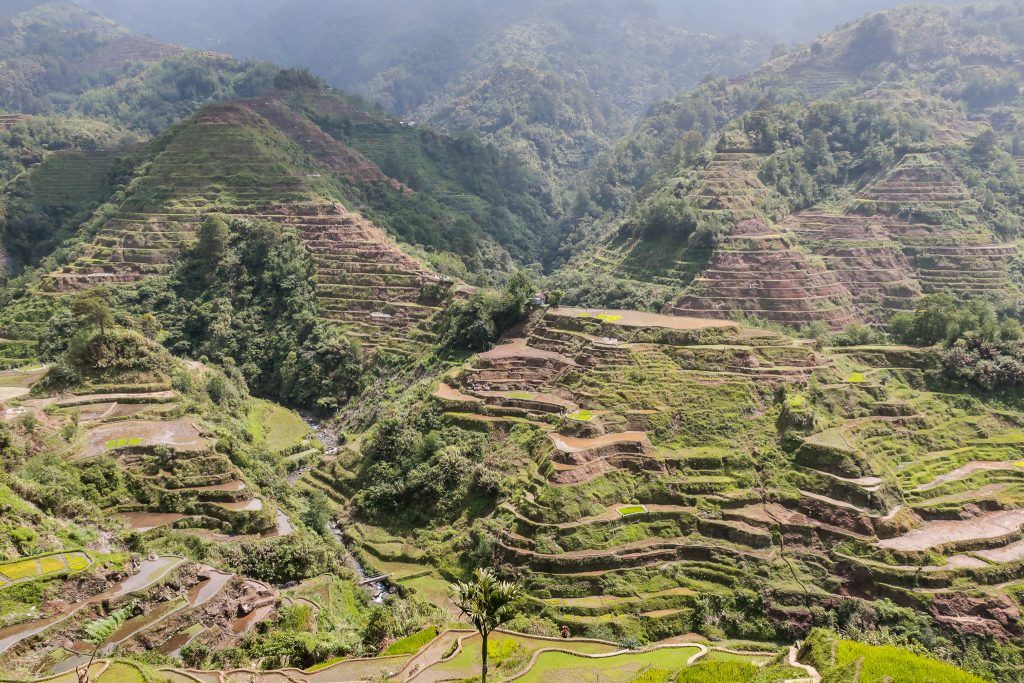
HOT SPRINGS WAS A NICE BREAK FROM THE HIKE
We walked an hour and then arrived at hot springs tucked up on a hill next to the flowing river. I have seen more impressive hot springs during my travels but it was nice to relax in the thermal water. And when we got too hot, we hopped out and into the flowing river with cold, mountain water that bordered the hot springs.
On the way back to the van, we took a different path. We crossed over irrigation canals, climbed steps to new terrace levels, and then climbed down ladders built into the walls of the rice terraces. It was peaceful to walk through the fields and breath in the fresh air. I felt so free!
DAY TRIP TO BATAD
My favorite part of the Ifugao trip was the day trip to Batad from Banaue. The Batad rice terraces are breathtaking and one of the prettiest sites I have ever seen. The rice terraces looked like a perfect amphitheater all the way up the side of the mountain with the small village of Batad centered at the base.
It is not easy to get to the village of Batad. From Banaue, you must take a 30-40 minute car or bus ride over a high mountain pass until the road ends. And then you hike about 15 minutes to the higher town of Batad which overlooks the stunning area. But to get to the small village of Batad at the base of the terraces, you must walk down through the maze of rice terraces.

TERRACES CREATED IN 2,000 B.C.
The difficulty getting to Batad is certainly worth the trip. I wanted to sit and look at the perfectly structured scenery. The terraces were first constructed over 4,000 years ago and have been cultivated by tribal generations since. The terraces are made with many different layers, including clay, to both hold the water and to help the crop grow.
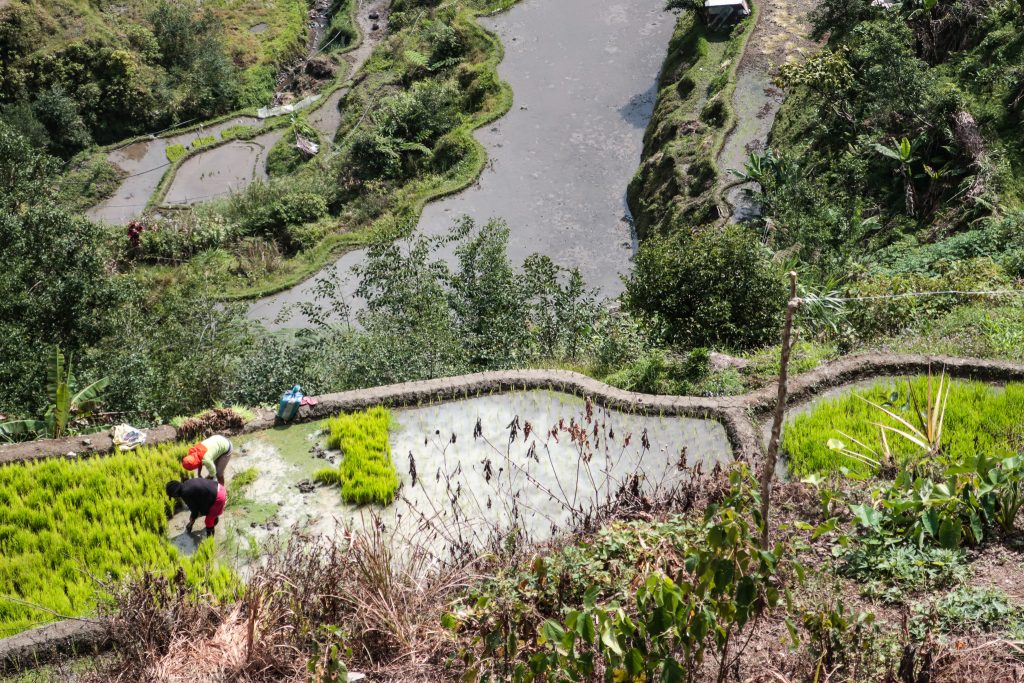
ENGINEERING MARVEL
The irrigation system is an engineering feat. The rice terraces were originally built on this mountain because of the source of water from the top. The water is managed the entire way down to each terrace so the perfect amount of water flows by gravity.
RICE TERRACES ARE WORK OF ART
In my opinion, beauty comes from the fact that each terrace wall has a concrete top which form walkways. So the terraces are neatly lined. And as you look across the entire setting, the concrete shows as white lines delineating each “step” up the mountain. It is perfect and neatly constructed. Other rice terraces I have seen around the world do not have the concrete walkway or top. The Batad rice terraces are the best designed I have seen in the world. A must see!!
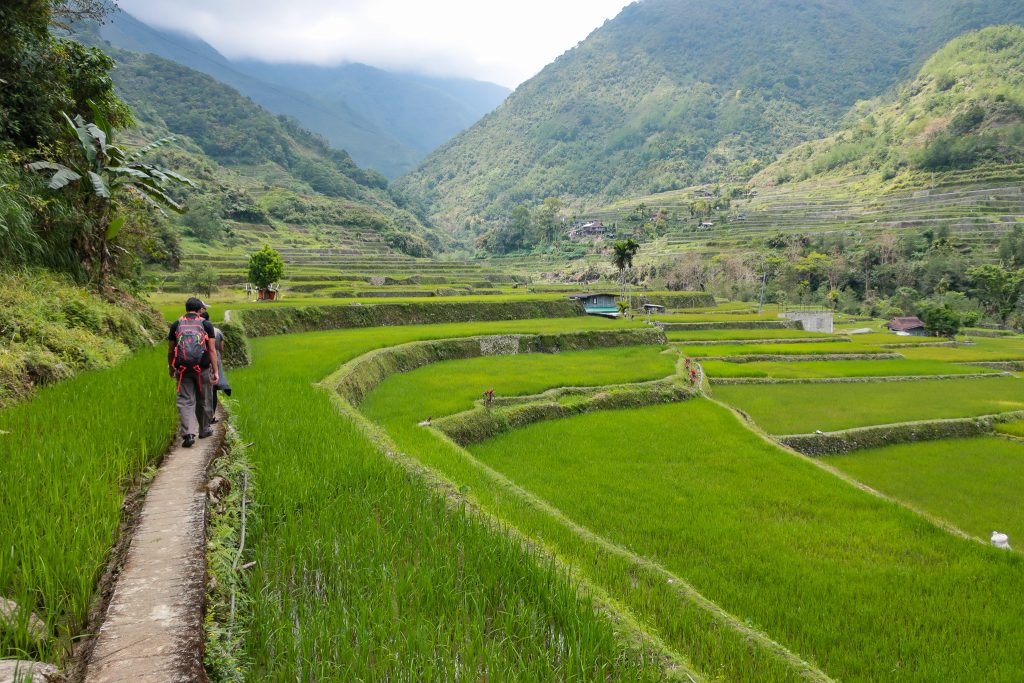
STUNNING TAPPIYA WATERFALL
After we walked across the beautiful terraces in Batad, we continued to trek down 700 steps into another valley around the mountain along the river. And once at the bottom, a huge waterfall appears. The water is flowing about 40 meters down to a pool of water surrounded by rocky cliffs. It was one stunning site after another in Batad!
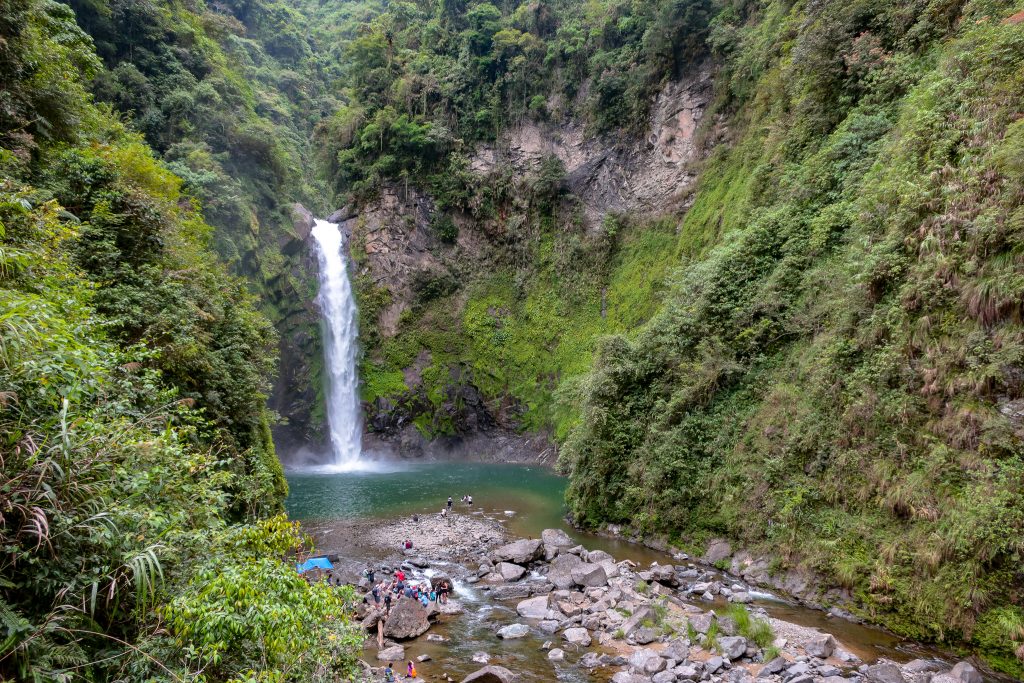
SAGADA OR NOT TO SAGADA?
While I was in Ifugao, I kept hearing other travelers mention that Sagada as the new tourist spot. Of course Sagada has been around forever but it is recently receiving more international tourists. I chose not to go because it was Easter weekend and many local tourists flooded the region. And the drive from Banaue to Sagada is two hours one way (further away from Manila) along a narrow, winding road. But I have heard this mountain region is beautiful and worth going for its hikes, hanging coffins from the sides of cliffs, and the up and coming local coffee!
HOSPITALITY LACKING (UNFORTUNATELY)
I must say here that of the many places I have traveled in the world, the hospitality staff (receptionists, food servers, hotel staff) in Banaue had no sense of hospitality. I stayed in two different lodges and ate at 6-7 different restaurants. This surprised me since I have heard that the Filipino people are some of the friendliest in the world. It felt the entire time like I had to get their attention if I needed anything (or when ordering food) and when I did flag them down, they were annoyed that I did. It didn’t feel very welcoming as a tourist. I don’t feel this was just an unfortunate chain of events because I also felt this in Coron and El Nido.
WORTH THE NINE HOUR BUS RIDE
Even though the hospitality was lacking, the Ifugao rice terraces were some of the most unforgettable scenery that I have ever seen. The nine hour bus ride from Manila is worth the trip. Definitely carve out three days of your next trip to the Philippines to spend in the Ifugao Province.
Have you seen rice terraces? Where are your favorite terraces? Feel free to leave a comment below.
